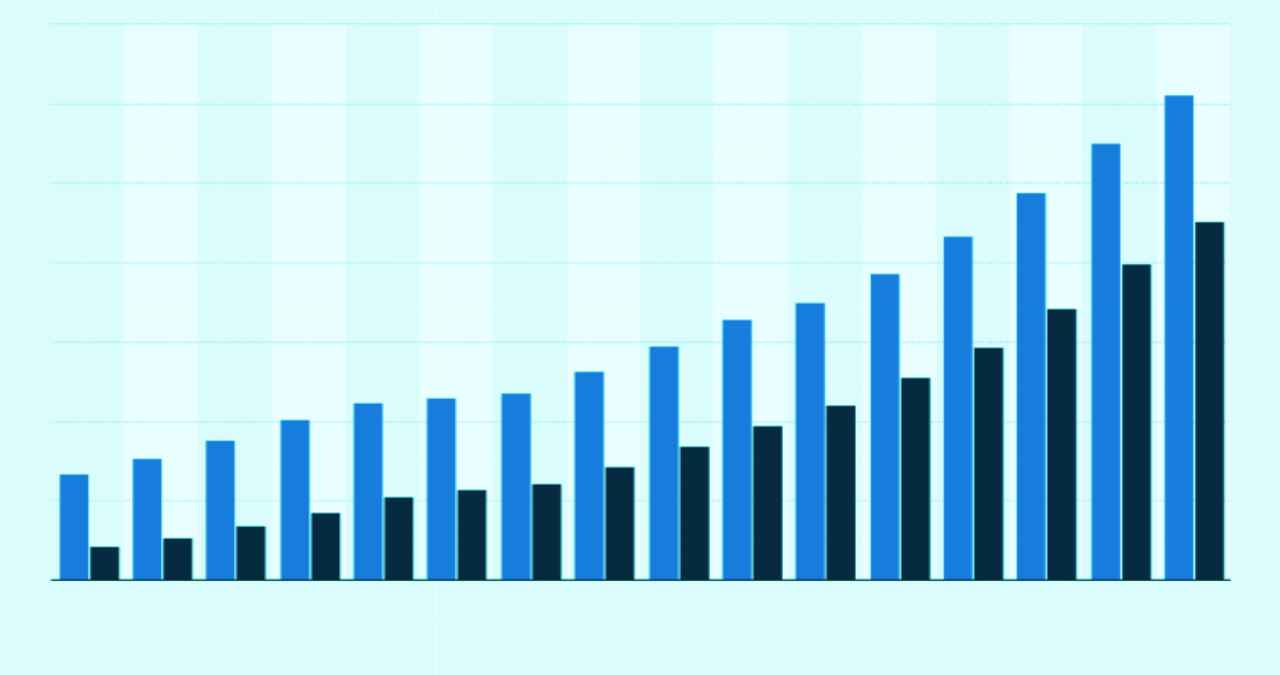You or one of your customers already have numerous visitors in the online shop and only a small fraction of them shop there? Then I would like to give you some valuable tips for improving your conversion rate (the ratio of visitors to buyers/newsletter registrations etc.) along the way.
In addition to SEO and SEA measures, conversion optimization for online shops has become an essential discipline in online marketing. It is therefore not always just a matter of generating as many visitors as possible, but of getting as many of the existing visitors as possible to an action (purchase, download, request).
But what is a good conversion rate anyway? Which average values are common in e-commerce? It depends, on the one hand on the industry and on the other hand on the competition. Values between 1 – 10% are given in various case studies. In addition to the competitive situation, the conversion rate depends on many other factors such as product type, product price, and season.
Table of Contents
The top 4 aspects of conversion optimization in online shops:
- trust
- Emotionality
- personality
- Usability and findability
It is therefore about creating a confidence-inspiring, emotionally charged shop that ensures that products can be found easily and exudes personality. Everything goes without saying, but where is the best place to start?
I personally like to start with the shopping cart/checkout, because here mostly large levers can be operated with manageable effort, and especially the checkout process plays a key role in the shop occupies. Funnel visualizations in Google Analytics often show that only approx. 1/3 of the shopping cart visits lead to a purchase. Often the shopping cart is also used as a watch list and finally a majority of the visitors decide not to buy. Therefore, as an online shop operator or optimizer, you should integrate a watch list to reserve products. Large and successful online shops such as Amazon and Zalando, for example, maintain such watch lists, separately from the shopping cart. This allows the order process between the shopping cart and purchase to be analyzed and optimized more precisely.
Below, as promised, the 5 tips for conversion optimization:
1. Optimize your order process (checkout)
The ordering process in your shop should always be as simple and clear as possible. The customer must always know where he is in the ordering process. This is made possible, for example, with a status display.
A few ideas for optimizing the ordering process:
- Emphasize security, trustworthiness and data protection (e.g. with SSL certificates)
- Labeling campaign buttons with, for example, “continue via security server” can generate even more trust here.
- Show or link positive customer voices. Logically, customer voices have a much greater impact than your own advertising. Ideally, customer voices offer the full name, the company, and optionally a photo.
- Seal of approval, logos of payment and logistics service providers, brand logos can create additional trust. It is crucial to find an optimal positioning and combination for the seals of approval. Advantageous positions are in the header and footer as well as in the vicinity of the shopping cart and order elements.
- Hide main menu: Visitors could otherwise be distracted and jump off, even though they were already on the way to completing the purchase.
- Integrate step back button (thus the customer has the ability to cancel security at any time and revise his decision)
- Check and optimize Pagespeed in the checkout. You can do a quick Pagespeed test here.
- Possibility to send e-mails with the shopping cart (many users only want to shop later when they are at home, for example).
- Integrate thumbnails of products so that the customer can see what he is buying.
- Send follow-up emails to registered shopping cart abandoners.
- Minimize distractions: banner ads, cross-selling and upselling products should be avoided in the checkout. Alternatively, these can be presented on the thank you page to encourage a follow-up purchase.
- Offer guest access: Many users shy away from creating a customer account as a new customer. Guest access avoids the resulting purchase cancellations.
- Keep the checkout process as short as possible: each step makes the ordering process more complex. The fewer steps this involves, the higher the likelihood of a successful purchase.
- Implement a progress bar with links to steps that have already been processed
- Permanent shopping cart display: The continuous display of the shopping cart gives the potential customer security.
- Mark mandatory fields clearly: To avoid error messages that can have a negative impact on the conversion, mandatory fields should be clearly marked.
- Implement support for auto-complete: The auto-complete and autofill functionality of the browser is supported for certain queries by a suitable field name. This can significantly simplify and accelerate the ordering process.
- Label buttons in an understandable and self-explanatory manner. The visitor recognizes the purpose of the buttons at first glance and this increases the actions.
- Buffering user entries: To ensure that entries that have already been made are not lost, they should be temporarily stored so that the user can seamlessly complete the checkout process in the event of a temporary jump.
- Provide contact options: The order process is often ended prematurely due to unanswered questions. Contact options via telephone or a live chat can often prevent this. This enables you as a shop operator to react quickly to user questions throughout the entire checkout process and to create more trust.
Also Read: How Does Google Make Money?
2. Make your call-to-action elements striking
Call-to-action elements and download buttons should stand out from the rest of the elements and be quickly noticed by the user. The color of an order button is less important in my opinion, but can also be tested with an A / B test. Large and successful online shops often rely on orange or green, if these colors harmonize well with the other elements of your shop, you should try a test.
In addition, a clever request for activities such as “order now” or “download now” can increase the conversion rate. Especially on the Internet, where users have little patience and often have an enormous amount of information to process, it is important to guide them specifically about what they should do next. The number of options should also not be too large, otherwise many overwhelmed visitors could jump to the next offer.
3. Present your company and your products at their best
The basis for successfully selling products over the Internet is an appealing product presentation with multimedia elements and detailed product descriptions.
Show what your product can do with videos
Videos are very popular with internet users and are also increasingly being used for product and company presentations. The target group can be addressed much better via the emotional level through a video and can decisively influence the way a brand or a product is perceived.
In a study by Moz.com, an international SEO consulting company, it was found that blog posts with videos are viewed longer on the one hand and are more often liked and shared with social buttons on the other.
In addition, it turned out that posts with videos received more “Like” clicks on Facebook and more Google +1 and were mentioned more frequently on Twitter. Users spend 88% more time on websites with video content. A study by Gettyimages also comes to the conclusion that videos in emails generate a 96.3% higher click rate and websites with videos result in an over 80% increase in conversion rates. Of course, the conversion rate also depends on many other factors as well as on the industry. However, these results show that videos can make a big contribution to improvement.
Since there is no cost/benefit ratio for a large number of products to offer videos for all product groups, it is advisable to create appropriate advertising and information videos only for very frequently searched products or products with high-profit margins.
Videos can also be very useful for search engine optimization because they improve usability and can contribute to better ranking through video SEO. Furthermore, videos that are either integrated on a website or a video portal such as YouTube can be displayed during a search query in the organic Google Web search if certain criteria are met that match the search query. The more noticeable snippets in the search results usually result in higher click-through rates.
Integrate evaluation functionalities
In order to constantly improve your product range, it is highly recommended to integrate evaluation functions for the individual products. On the one hand, this serves as a confidence-building element for the visitor if other users have already rated the product positively. On the other hand, you can use the evaluation functions as a feedback channel for defective products that need improvement or should be discontinued. This allows you to improve your overall product offering, which in turn leads to higher user satisfaction and thus to more returning visitors and buyers. Furthermore, with product reviews, you also get a lot of user-generated content that can have a positive impact on your search engine rankings.
Present yourself and your company
Especially in online shops where personal contact is lacking, it is essential to provide as much information as possible for the customer and to show something “personality”.
Who is behind the shop? What distinguishes your online shop? What benefits do customers have from your products? These are questions that visitors regularly ask themselves consciously or unconsciously behind the screen. As a shop owner, you should tell something about your company’s history and the creation of your shop and thus gain the trust of your visitors. This confidence-building measure can also ensure that you, as a shop operator, will be remembered much more by users.
4. Build trust, personality, and emotionality
For online shops, the trust of visitors is a decisive factor that can speak for or against a purchase. Trust can be built through certain trust elements. In the meantime, the use of quality seals has become an absolute must in order to operate successful e-commerce. Especially on the Internet, where anonymity is not always easy to win the trust of visitors, faces of people who can be seen in the direct field of vision can provide the necessary trust. This trend has been observed for several years and various studies have shown that faces on landing pages have a positive effect on the conversion rate.
The head area of websites is of vital importance, as it often attracts attention and is visible on every page. The best thing is that the head area on every website is the same as an internet presence and thus conveys consistency and trust.
For example, use the following description attributes next to your logo in the header:
- Shop quickly, easily and risk-free
- Buyer protection & data protection
- Secure payment with SSL encryption + SSL logo
- Money-back guarantees
5. Refine your product search
The search function is an important element that is often used, especially for large online shops with many categories and subcategories. A good search function should be fault-tolerant and find article descriptions even if hyphens or spaces are missing. Since the integration of a flawless search function requires a lot of effort, the integration of Google search or a separate solution like Findologic in your own shop can help. The results are visually adapted and output directly on your own website. In addition, a filter search by category can make it easier to find products.
Also Read: Visual Content Can Increase The Traffic Significantly




